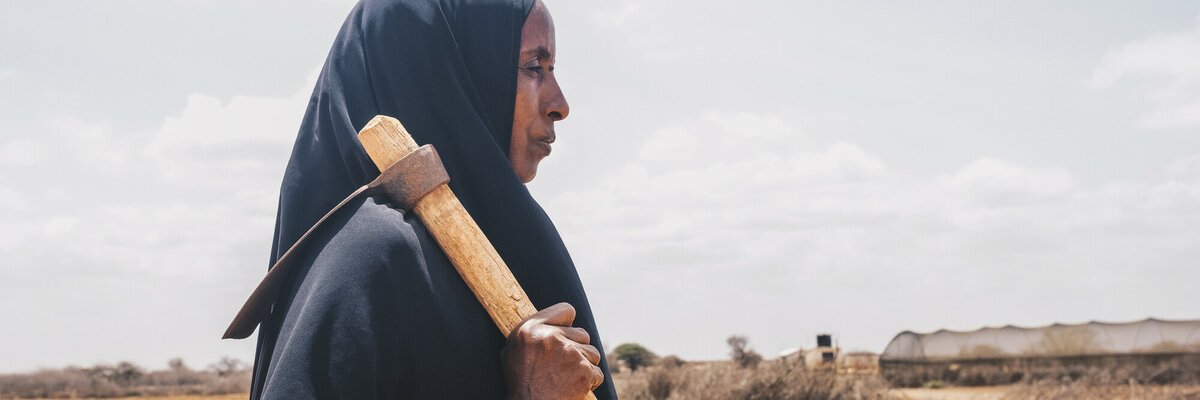
"We used to have 3 proper meals a day... I was rearing goats and operating a small shop which sustained my life. After the drought, I lost all my goats." Diyaara stands in the farm that once provided food for her family. Photo: Khadija Farah/Oxfam
After the drought, I lost all my goats and lived off on my savings. I had to eventually close the shop.”
Diyaara, Wajir, Kenya
What's happening in East Africa?
More than 28 million people across Ethiopia, Somalia, Kenya and South Sudan are fighting for their lives. It’s the worst hunger crisis in living memory.
Famine = Failure
The crisis in East Africa has been caused by a deadly combination of climate change, conflict and the crippling cost of living. There has already been a huge loss of life, with millions of people now at risk of famine.
More about the situation in Somalia, Ethiopia, South Sudan and Kenya
World leaders have failed to do enough to prevent this devastating crisis – despite making commitments to end global hunger. It is still possible to avert widespread famine if we act now.
We used to have 3 proper meals a day... I was rearing goats and operating a small shop which sustained my life. But after the drought, I lost all my goats and lived off on my savings until the last penny. I had to eventually close the shop.”
Diyaara (pictured above), Wajir, Kenya
What can I do?
- Share this video on social media.
- Donate to help our partners offer food, clean-water and shelter to communities.
How is this impacting people?
Across East Africa, people are leaving their homes in search of food and water. In crises like this, women and girls are among the worst affected.
For the past four years, it is either flood, drought, famine, violence, or COVID-19. This is just too much. I am tired of living. If it continues like this, I doubt if my girls will become full adults.”
Nyadang Martha, South Sudan
We hear stories of mothers missing meals so their children can eat. Girls will sacrifice their education to look after family whilst their parents are forced to search for food.
Mareya reveals the devastating cost of the severe drought affecting Kenya’s Wajir region, where pastoralists rely on their animals for their livelihood.
What impact is the climate crisis having?
People on the front line of a climate crisis they did not cause. Ethiopia, Somalia and Kenya are facing the worst drought in 40 years. South Sudan is experiencing extreme flooding.
How is conflict affecting the crisis?
Communities across East Africa are living through terrifying conflict which has further destroyed sources of food and income.
How is the rising cost of living impacting people?
Conflict in Ukraine is disrupting the supply of grain, cooking oil, fuel and fertiliser. And food prices are skyrocketing all over the world.
What's the bigger picture?
90%
90% of Somalia is in severe drought. More than 670,000 people have left their homes.
3.1million
More than 3 million people in Kenya are experiencing extreme hunger and need humanitarian help.
9.4million
More than 9 million people in Ethiopia need urgent humanitarian support because of extreme drought and conflict.
What is Oxfam doing?
Through our local partners, we’re offering short and long-term support to hundreds of thousands of people who are fighting to survive. This includes:
- Providing clean water, food and sanitation.
- Digitally transferring money to people’s mobile phones so they can buy essentials.
- Offering support to women who have been displaced by the drought and experienced sexual violence.
- Providing training in ways to adapt livelihoods in a changing climate.
Billy Owiti/Oxfam
I have been receiving the cash for a while now… With the cash, I am able to buy groceries and feed my children.”
Ebla, part of the WASDA cash scheme in Wajir, Kenya
More about our partners
- WASDA is offering people in Wajir County, Kenya, money digitally transferred to their mobile phones, so they can buy what they need.
- Somali Resilience Programme is offering training to help farmers adapt to a changing climate.